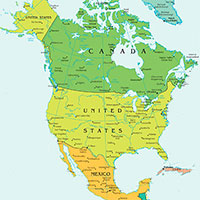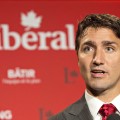Canada – COP21 Profile
admin | December 7, 2015.
In October 2015, a new national government was elected. Incoming Liberal Prime Minister Justin Trudeau pledged that Canada’s role in the UNFCCC will be climate positive, and that its policy will be based on science. As a sign of his commitment to address climate change, the name of the Ministry of Environment was changed to the Ministry of Environment and Climate Change.
Trudeau plans to tackle climate change in partnership with the provinces, promising a joint strategy within 90 days from the conclusion of COP21. He cites the leadership of Canadian provinces that are executing a carbon tax or cap and trade systems as examples of the type of leadership he wants to see across Canada.
Climate change has been a core concern of the Canadian Assembly of First Nations (AFN). AFN states that climate change will affect First Nations people “more directly and immediately”, as connection to the land is part of their traditional way of life.
Canada’s efforts to mitigate climate change weakened under former Conservative Prime Minister Stephen Harper, whose government actively pursued the idea of becoming an energy superpower. To this end, it supported extracting oil from the country’s tar sands, with multiple pipeline projects such as Keystone XL. Canada’s economy is closely tied to its natural resources, including tar sands.
Canada was the only country to have withdrawn from the first commitment period of the Kyoto Protocol. Projections show that Canada will not be able to meet its greenhouse gas reductions target for 2020. At the sub-national level, however, many provincial and local governments have been acting to reduce their emissions and act on climate change. British Columbia, for example, has implemented a carbon pricing system, and Ontario has begun to phase out the use of coal power plants.
- Capital: Ottawa
- Population: 35.2 million
- COP classification: Annex I
- Member of the G8, G20, OECD, APEC, and Arctic Council
- Country grouping(s) within the UNFCCC: The Umbrella Group (an informal coalition of some non-EU developed countries including Australia, Canada, Japan, Kazakhstan, New Zealand, Norway, Russia, Ukraine, and the US, which formed following the adoption of the Kyoto Protocol)
- Head of State: Governor General David Lloyd Johnston
- Head of Government: Prime Minister Justin Trudeau
- Chief negotiator: Catherine McKenna, Minister of the Environment and Climate Change
Emissions Profile
Canada represents 1.6% of the world’s greenhouse gas emissions. From 2005 to 2013, Canadian greenhouse gas emissions decreased by 3.1%, while the economy grew by 12.9%.
- Annual gross greenhouse gas emissions, incl. LULUCF (2012): 856.28 megatonnes [Country rank: 9th]
- Annual greenhouse gas emissions per capita, incl. LULUCF (2012): 24.64 tonnes [Country rank: 10th]

UNFCCC Profile
At the November pre-COP ministerial meeting, Canada was welcomed back to the climate change discussions as a country willing to take the issue seriously. However, it is still too early to gauge how strong Canada’s negotiating positions will be under the newly elected Trudeau government.
Canada’s INDC holds that the Paris agreement “must include meaningful and transparent commitments from all major economies, balance environmental protection and economic prosperity, and maintain a long-term focus”.
Under Canada’s current INDC commitments, land use change and forestry (LUCF) is accounted for as a net source of carbon dioxide absorption. This means that Canada will be required to undertake smaller reductions in its greenhouse gas emissions from energy and other industrial sectors.
Pre-2020 commitments:
– Under the first commitment period of the Kyoto Protocol, Canada pledged to reduce its emissions by 6% below 1990 levels by 2012.
– Canada withdrew from the first commitment period of the Kyoto Protocol in 2012. At the time, Canada was at risk of failing to meet its emissions reduction targets.
– Status of ratification of the second commitment period of the Kyoto Protocol (the Doha Amendment): Not accepted.
INDC commitments:
– Canada intends to reduce greenhouse gas emissions by 30% below 2005 levels by 2030.
Energy Profile
Canada’s use of oil, gas and nuclear energy has increased since 1990, while its reliance on coal has decreased slightly.
Hydro is one of the biggest energy sources in Canada, and is generated in large part by dams in Quebec and British Columbia. Ontario has made significant investments in wind and solar power, and created a preferential rate for those who produce renewable energy.
Source: BP 2014.
Created in conjunction with WWF.














comment